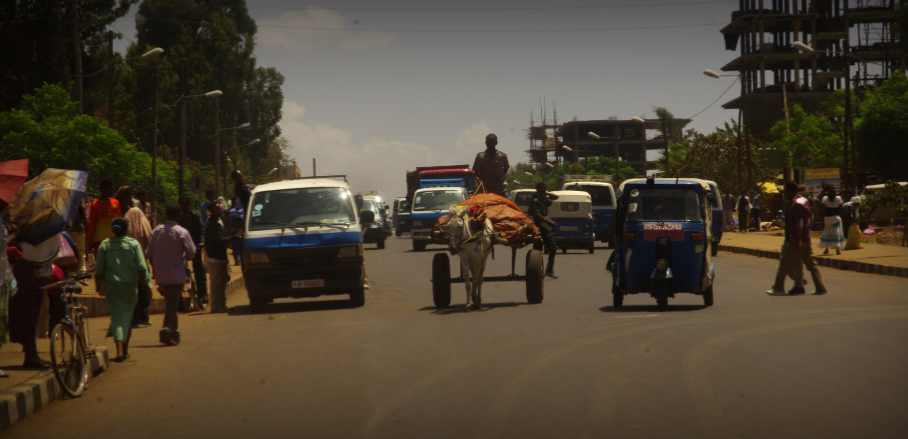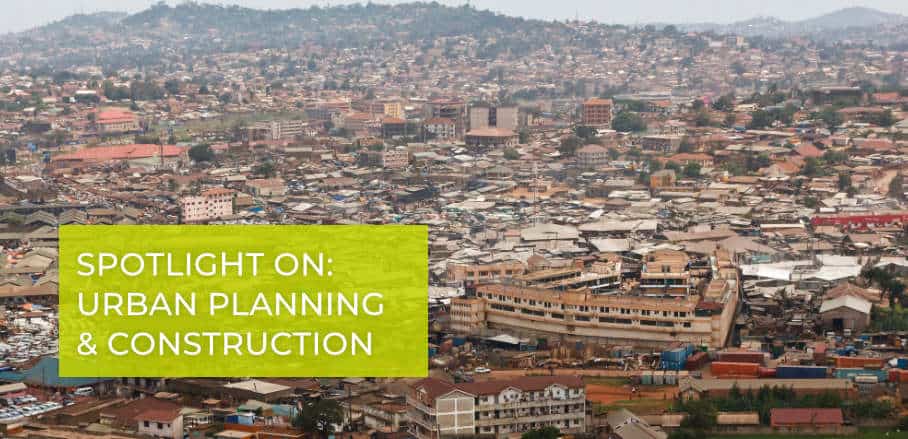Planning for Growth: How to Manage Rapid Urbanisation
Rapid urbanisation is leading to quick spatial expansion in cities across Africa – but cities are largely failing to manage this growth. Urban expansion planning is a tested and pragmatic strategy that cities can use to organise their urban peripheries. By Patrick Lamson-Hall
Almost 94 per cent of all global urban population growth between now and 2050 will take place in developing countries and resource-scarce governments face serious challenges in managing this growth. In this context, the only realistic plans are simple plans with clear outputs. A good example can be seen in Bahir Dar, Ethiopia.
In this small East African lakeside city, new factories are opening, and job opportunities are drawing migrants from the countryside to work in home-grown industry zones and internationally focused export parks. New housing developments – not slums, but orderly and well-connected new urban neighbourhoods – are rising on the urban periphery. Moreover, the city is developing a network of public open spaces, designed to protect the critical natural systems that provide clean water to the growing population.
As the head of the Ethiopia Urban Expansion Initiative, a programme which since 2013 has supported 18 Ethiopian cities in planning for urban expansion, I see Bahir Dar as the leader in a growing set of cities that are making proactive and pragmatic preparations for urban population growth. These cities are using simple and lightweight urban expansion plans, driven by data, that focus on laying out lands on the urban periphery for their next 30 years of spatial expansion.
Embracing Urban Expansion in Five Steps
This planning approach is called Making Room for Urban Expansion, and it hearkens back to the 19th century urban plans of New York, Barcelona, and other great cities that planned for bright futures. The key to managing urbanisation is to acknowledge and embrace urban expansion by securing a grid of arterial roads and sensitive environmental areas on the urban periphery before development occurs. This allows city governments to get ahead of growth and ensures that vital infrastructure corridors and orderly transportation linkages are in place as a city expands into its urban periphery.

Google Earth Image showing the well-planned urban expansion in Bahir Dar © 2021 Maxar Technologies
Making room for urban expansion asks cities to take five steps to prepare for their growth: First, project the amount of land that the city is likely to consume for the next 30 years. Second, secure planning authority over an expansion area big enough to meet that demand for land. Third, preserve environmentally sensitive areas in the expansion area. Next, plan a grid of arterial roads, 30-metres wide and spaced one kilometre apart, covering the expansion area. Last but not least, protect the rights of ways for those roads and environmentally sensitive areas now, today, before the urban periphery has been built up. The laying out of smaller areas, siting of public facilities, provision of transit and infrastructure, and other key urban priorities will all be made easier if the periphery is first organised with an urban expansion grid.
This five-step approach is both impactful and cost-effective: From 2013 to 2017, 500,000 US Dollars of technical support – training and workshops – from New York University catalysed investments of 35 million US Dollars from the municipal infrastructure budgets of four Ethiopian cities. The funds were invested in the protection or construction of over 570 kilometres of arterial roads, making room for the expected increases in the urban population, an outcome with stakes in the ground. Mayors reported a decrease in informal settlements, better provision of infrastructure, and higher revenues. This work was expanded to fourteen additional cities in 2014 through an NYU partnership with the Cities Alliance.
Prioritising Orderly Expansion is the Only Way Forward
But despite this demonstrated impact and early support, only a handful of organisations and governments endorse the approach. Urban expansion planning is often falsely portrayed as surrendering to urban sprawl. But urban population growth is always accompanied by an increase in urban areas, and growth on the urban periphery is already occurring. Cities worldwide have on average doubled their population and tripled their urban areas since 1990. They are on track to repeat this performance by 2050, and cities in some countries, such as Ethiopia, will see their urban population increase five-fold and their urban areas increase seven-fold.
Cities and international organisations should take heed of the strong empirical link between population growth and the growth of urban areas, and balance their existing agendas of densification and compact growth, with orderly expansion: A growing body of evidence shows that densification can accommodate, on average, roughly one-quarter of total urban population growth. Urban expansion, or growth on the urban periphery, accounts for the other three-quarters of total population growth.

Bahir Dar © D. Brandsma/flickr (CC BY-NC-ND 4.0)
One strategy for building international support is to link urban expansion to other critical agendas. For example, two out of every five new urban residents in Africa are rural to urban migrants. These migrants are vulnerable to the problems that result from disorderly growth, such as slums, a lack of formal sector jobs, poor infrastructure provision, and limited access and connectivity to the rest of the city. Urban expansion plans, with their network of arterial roads, 30-metres wide and spaced one kilometre apart, use public space to organise new areas of the city, physically integrate new urban areas into the city, while also providing ample lands for homes and businesses, reducing the cost of installing trunk infrastructure, and guiding construction away from hazardous zones and areas of environmental risk.
Change is Within Reach – If we Invest Properly
Responding to this new link between urban expansion and migration, Swiss Development Cooperation is now supporting the Cities Alliance Cities and Migration Programme to work with nine additional cities in Ethiopia, Somalia, and Uganda in an important new regional initiative.
This new work is building the capacity of local planners and regional and national officials to actually make and manage expansion plans, a long-term engagement strategy that creates buy-in to help solve the sticky problems of acquiring land, paying compensation, and preserving the rights of ways – issues that all urban plans face, but that urban expansion planning embraces as a key part of the plan-making process.
I strongly believe that change on the ground is the most important test of the success of an urban plan. Compared to most master plans or comprehensive plans, expansion plans are easier to manage and implement because they are simpler, require less data and coordination, ensure that growth is managed at the correct scale, demand less enforcement by focusing exclusively on the arterial road rights of ways, and front-load the necessary investments to protect that grid, rather than relying on recurrent expenditures.
The Approach is Working
Cities like Bahir Dar show that secondary cities in Africa can indeed manage their urban growth and create orderly, productive, inclusive, and sustainable cities through urban expansion planning. But for the approach to spread beyond a handful of lucky cities, more organisations and governments have to listen to the data and embrace urban expansion planning for what it is: a pragmatic, evidence-based and implementable way to support African cities in managing inevitable rapid urbanisation.
- Planning for Growth: How to Manage Rapid Urbanisation - 18. February 2021
